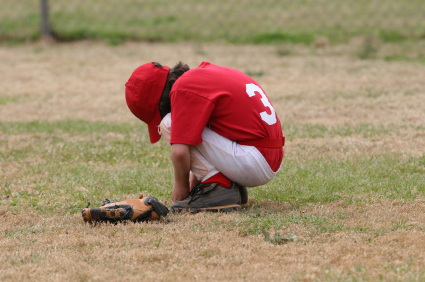Youth baseball pitchers throwing more than 100 innings in a calendar year are 3.5 times more likely to be so seriously injured as to require elbow or shoulder surgery or retirement due to injury, according to a new study by researchers at American Sports Medicine Institute published in the the American Journal of Sports Medicine.1
Supports new pitcher/catcher ban
Based on research suggesting that pitchers who also catch may be at increased risk of injury, Little League Baseball instituted a new rule in 2010 banning any pitcher who delivers 41 or more pitches in a game from going behind the plate to play catcher for the remainder of the day.
The new study appear to provide some support for such a ban. But, while it found that playing catcher appeared to double or triple a pitcher's risk of injury, the small number of injured players studied prevented a finding that the risk was statistically significant. Nevertheless, the authors concluded that playing both pitcher and catcherbe "discouraged."
Jury still out on curveballs
Researchers attempted to study the extent of the risk of serious injury from throwing curveballs before age 13 but, while the data seemed to show a slight increased risk associated with beginning to throw curveballs at a young age, the study had far too few participants to make a conclusive link. Thus, the true risk of serious injury from starting to throw curveballs at an early age, which has been the source of considerable debate and controversy over the years, is still unknown.
Recommendations
On the basis of its findings and a review of the literature, ASMI recommends:
- Pitchers in high school and younger should pitch no more than 100 innings in competition in any calendar year;
- Young pitchers who have not developed should be limited to even fewer innings;
- No player should continue to pitch when fatigued; and
- While baseball players may play multiple positions, an individual should be discouraged from playing both pitcher and catcher.
Risks of unregulated travel ball
More and more youth baseball players play on multiple teams at the same time. While playing on multiple teams may give him/her a chance to develop his skills, and while the amount of pitching may be limited by league rule or the judgment of the coaches, playing on multiple teams with overlapping seasons increases the risk that he/she may end up exceeding Little League or USA Baseball pitch limits, or the 100-inning limit recommended by ASMI in the new study because of a lack of communication and coordination between coaches, who are likely to end up blaming each other if a child suffers an arm injury.
Parents should therefore remember that, if they let their child play on more than one team at once, or play baseball season after season, it is likely to be up to them, as their parent, to keep track of pitch counts, days off, and innings pitched, and to insist that the coaches not exceed those overall limits.
The new study's finding of substantially increased risk of serious injury when a pitcher exceeds 100 innings in a season recommended limit is of particular concern in the unregulated "travel ball" realm and the increasing frequency of young pitchers pitching for multiple teams in the same season, teams that may not be subject to USA Baseball or Little League rules and guidelines designed to protect young arms.
Posted December 8, 2010








